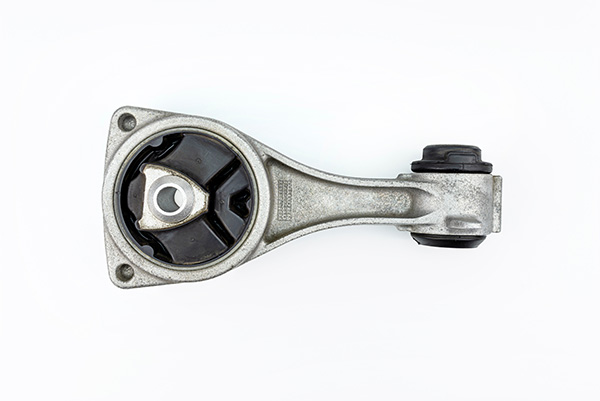
When it comes to maintaining your vehicle, it's easy to overlook the smaller components that can affect performance and safety. One such part that often goes unnoticed is the transmission mount. Although small in size, worn transmission mounts can have a big impact on the way your car drives, handles, and even operates. Understanding how these mounts function and recognizing the signs of wear and tear can save you from bigger problems down the road.
What Do Transmission Mounts Actually Do?
Transmission mounts are designed to secure the transmission to the vehicle's frame and absorb vibrations from the engine and transmission. Essentially, they keep everything in place while ensuring you experience a relatively smooth and quiet ride. These mounts are typically made of metal and rubber, providing a combination of strength and flexibility.
The rubber component absorbs the engine's vibrations, reducing noise and shock. Over time, the constant stress can cause the rubber to degrade or the metal to wear down, compromising the mount's ability to perform. When this happens, the impact on your vehicle can be more significant than you might expect.
Signs of Worn Transmission Mounts
How do you know if your transmission mounts are wearing out? It's important to watch for the following signs:
Increased Vibrations
One of the first things you'll notice is an increase in vibrations, particularly when you're idling. Since the mounts are supposed to absorb these vibrations, a worn-out mount will let more of them transfer to the cabin.
Clunking or Banging Sounds
If you hear unusual noises, especially when shifting gears or accelerating, it could be a sign that the transmission mounts have become loose or worn. These sounds often occur because the transmission is no longer being held securely in place.
Rough Gear Shifting
Worn mounts can make shifting gears feel less smooth and more jerky. You might experience more resistance when changing gears, or even notice the transmission moving more than usual during shifts.
Misalignment of the Transmission
Since the mounts hold the transmission in place, worn mounts can cause it to shift or sag. This misalignment can lead to improper functioning of other components and may cause further damage if left unaddressed.
How Worn Transmission Mounts Affect Your Vehicle’s Performance
The condition of your transmission mounts directly affects various aspects of your vehicle’s performance. If these mounts are worn out, the ripple effects can be far-reaching. Here’s how it impacts your vehicle:
Reduced Comfort
The most obvious and immediate effect of worn mounts is a noticeable decrease in ride comfort. Since the transmission and engine vibrations are no longer properly absorbed, you'll feel more bumps, shakes, and vibrations inside the cabin.
Increased Wear on Other Components
When your transmission isn’t held securely in place, it can shift and cause stress on surrounding components. This could lead to premature wear on your transmission itself, as well as the driveshaft and axles.
Potential Safety Risks
A misaligned or loose transmission is not just an inconvenience—it’s a safety risk. If the transmission shifts too much while driving, it could lead to a loss of control over your vehicle. This is especially dangerous when driving at high speeds or on winding roads.
Increased Repair Costs
Worn transmission mounts can eventually cause damage to other parts of your vehicle, leading to higher repair bills. Ignoring the problem for too long can even result in damage to your engine, requiring costly repairs or replacements.
When Should You Replace Transmission Mounts?
Knowing when to replace your transmission mounts can help you avoid the negative effects they can have on your vehicle. Generally, transmission mounts should last a long time, but factors such as driving conditions, road quality, and how hard you drive your car can affect their lifespan. If you're noticing any of the signs mentioned earlier—vibrations, noises, rough gear shifting—it’s time to have your transmission mounts checked by a professional.
We recommend inspecting the transmission mounts at least once a year, or during routine transmission or engine maintenance. Catching wear early can save you from more extensive (and expensive) damage later on.
The Role of Transmission Mounts in Longevity and Performance
Ensuring your transmission mounts are in good condition is essential to the overall longevity and performance of your vehicle. Well-maintained mounts help keep your transmission and engine aligned, reduce stress on your car’s structural components, and provide a quieter, more comfortable ride. When ignored, worn transmission mounts can cause a ripple effect of problems throughout your car's drivetrain and suspension system.
Maintaining these mounts may not sound as exciting as upgrading your engine or adding new features to your vehicle, but it’s a critical step in keeping everything running smoothly and extending your car's lifespan. If you're unsure about the state of your transmission mounts, a quick inspection by a professional technician can give you peace of mind and help you avoid costly repairs down the line.
Is your car showing signs of worn transmission mounts? Don’t wait until it gets worse—bring your vehicle to Ripley's Total Car Care for a full inspection and professional service today!